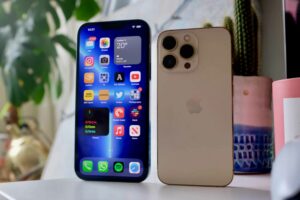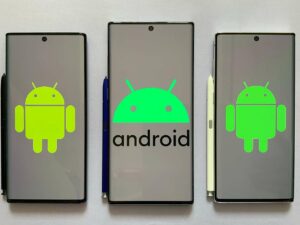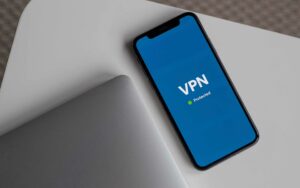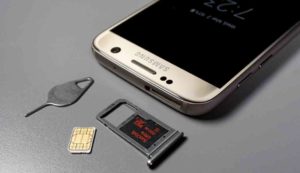10 Reasons Android Is Better Than iPhone
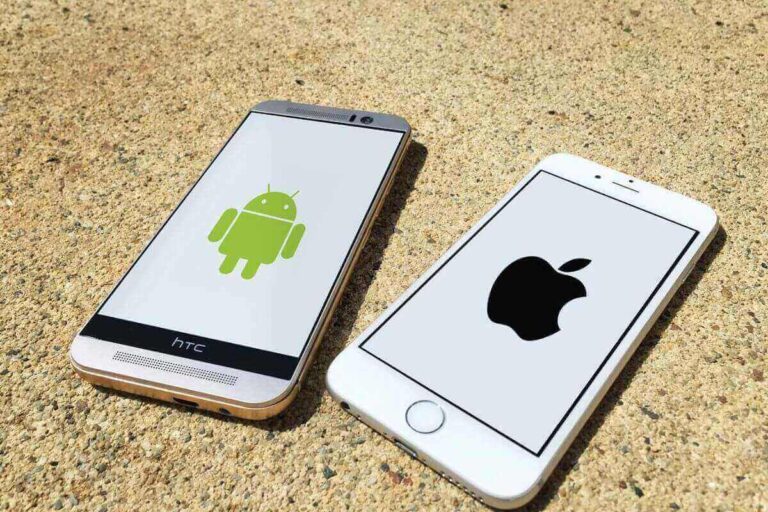
Android and iPhone users are naturally loyal to their preferred platforms, but the issue of system supremacy remains.
The iPhone launched the smartphone industry, but Android has since surpassed it in market share. It currently accounts for around 80% of global smartphone sales and even surpassing 90% in some countries.
This post discusses the top 10 reasons that make Android phones better than iPhones.
1. The Right Price
Android comes at the right price for all kinds of users and their budgets – from beginner devices priced just under $100 to the most powerful flagship phones like the Samsung Galaxy S23 Ultra that goes beyond $1,000 when loaded with extras.
Unlike the iPhone, which is designed for a specific group of people, the Android is universal. So, different companies build different versions of it designed for different demographics. Android users fall into 7 major groups.
- Budget-conscious Consumers: This demographic is all about price. They seek basic functionality and not many bells and whistles and are usually content with phones in the lower price range.
- Value Seekers: This group seeks a combination of performance and good pricing. They want a reliable phone like the budget group, but will also appreciate some bells and whistles for a slightly higher price. They usually go for mid-range phones.
- Gamers & Entertainment Enthusiasts: This demographic is all about a phone’s entertainment capabilities. From bright displays to crystal-clear sounds, powerful processors, lots of RAM, and enough storage for files and videos. They will typically buy phones in the medium- to high-price range.
- Tech Enthusiasts: With this demographic, it’s all about technical specifications, breakthrough technologies, and cutting-edge features that stretch the capabilities of mobile computing. This group often goes for flagship Android devices like the Samsung Galaxy S23 Ultra.
- Photography Enthusiasts: Smartphones killed the digital camera. And for many, the choice of a mobile device today relies heavily on its camera and photography-related specs.
- Lifestyle Users: This demographic is all about style and belonging. They desire to own and be seen with the latest or priciest devices. They value devices with sleek designs made from premium materials or with other trendy and viral-worthy stories attached to them.
- Unconventional Groups: Finally, some users value rugged Android devices or prefer those with longer-life batteries, more sensitive reception, water-proofing, and other non-standard features that make the Android ideal for their way of life or geographic terrain. This group includes adventurers, modern soldiers, and so on.
2. Free & Open Source
Android is a free and open-source project initiated and led by Google. It has grown over the years to include millions of app developers across the world. Most Android devs focus on user apps, while a smaller group does deeper system hacks. This large community and situation come with plenty of benefits as listed below.
- Low Entry Barrier: Being a free and open-source project reduces the entry barrier for Android developers. Anyone with a computer can join, unlike iOS development which requires a Mac.
- Plenty of Apps: There are over 3 million apps on the Google Play store, over twice as many as you will find on the iOS app store, all thanks to the free and open-source nature of Android.
- More Innovation: Having more developers onboard has also given rise to more innovations and contributions from the community that has put the Android system far ahead of iOS.
- Improved Security: More eyeballs to check the source code means more bugs and vulnerabilities are found by the community and quickly fixed, making Android safer.
- Custom ROMs: Android is available in many flavors, as each developer can take the core system and turn it into whatever he/she likes. This is impossible in the iPhone ecosystem.
- Better Integrations: Being free and open-source also means that more developers can easily integrate their hardware products, services, and platforms with Android.
3. Extensive Customization
The Android platform offers a higher degree of customization than you can get on an iPhone. Android lets you change everything, from screen layouts to icon packs to moving your widgets around, wallpapers, launcher apps, and notification settings.
You can also switch to developer mode, optimize your battery, switch keyboards, and so on. You can practically make your Android phone look completely different from how it originally was. This is not possible with an iPhone.
4. Hardware Variety
Different manufacturers make Android phones and they often use different hardware specifications and accessories to make their products stand out. The Samsung Galaxy, for instance, comes with a neatly tucked-in stylus, which the iPhone lacks. Some Android phone frames are made from metals, while cheaper phones feature completely plastic housings.
Further variety is available in colors. While the iPhone’s sizes and colors are limited, you can get Android phones in all sizes and colors. You will also find Android phones in all designs, aimed at different demographics.
5. Universal Charger
Most Android devices use either a micro-USB or USB-C charger. These are universal standards that countless devices in the open markets use. So, you can share your Android charger with most of your other gadgets. You can also visit Amazon or your favorite shop to buy a new one and still share it among your devices.
This freedom is not possible with the iPhone because Apple makes its chargers with a unique port called the Lightning Connector. They cost more money and are not necessarily as durable as standard USB-C or micro-USB cables.
6. More Storage Options
Android wins again when it comes to storage options. While Apple iPhone users are limited to their phone’s pre-installed memory and the 5 GB free storage that comes with iCloud, Android users have much more options.
Most Android phones come with a microSD slot that allows you to easily upgrade their memory. Plus, all Android phones come with Google services, so you get free 15 GB of cloud storage.
7. App Sideloading
Sideloading is the ability to install an app on your Android device without going through Google’s app store. Apple does not allow app sideloading up till the current iOS 16, so you must jailbreak an iPhone to sideload it. Android, on the other hand, makes sideloading easy with just a few settings’ changes.
Sideloading on Android typically occurs through USB, Bluetooth, memory card, WiFi, or direct download from a website. Though sideloading comes with the potential risks of installing malicious software on your Android and compromising its security, there are lots of benefits as well.
- A wider range of apps: You can access more apps through sideloading than are available in the official store. This can include specific versions, those that didn’t meet the app store’s policies, and so on.
- App version control: Sideloading makes it possible to install specific app versions. This can be helpful when you prefer an older version of the app. For example, when the newer version has issues with your device.
- Regional & Device Limitations: You can install and run apps using sideloading that are otherwise limited by region or device on the app store.
- App Development & Testing: Sideloading also makes app development and testing easy, since you can easily test new features on multiple devices without complex procedures.
8. Battery Replacement
The Achilles heel of mobile computing devices is their battery. Not only are they limited in capacity, but this capacity also tends to reduce with time. So, you will be changing a device’s battery after some time.
With Apple devices, you must bring the iPhone to an Apple store or certified service center, or else your Apple Care warranty becomes void. Android devices are different, as most come with easily swappable batteries that anyone can change in just a few minutes.
9. Custom Launchers
Android has many custom launchers like the Nova launcher, Niagara launcher, Microsoft launcher, and so on that offer unique user experiences. Launchers customize the user interface and help you with better personalization. They can also enhance the experience by providing animations, gesture controls, smart searches, and more.
You will additionally find custom launchers that are focused on business and productivity maximization, as well as experimental features that may not be available in a default version.
10. Custom ROMs
An Android custom ROM is simply a fork of the original Android operating system. This fork, however, can come with as little or as many modifications as the developers want. Many top technology brands from Alibaba to Baidu, Huawei, Amazon, and Kali Linux have all developed custom distributions. Following are some of the features you can experience on an Android custom ROM.
- User Interface: This is a very common feature of custom ROMs, as it is easy to see the UI differences from a stock Android ROM. Many custom ROMs also include theme and icon packs, animations, and unique fonts to stand out.
- Customizable Quick Settings: Amazon’s FireOS, for instance, is customized to work as the Kindle Fire, the Fire Phone, Fire TV, Amazon Echo, and so on. With the Kali NetHunter Android distribution, on the other hand, you can set up a WiFi attack access point with just a single click.
- CPU Clocking: Custom ROMs also allow you to either over-clock or under-clock the hardware device’s CPU.
- Enhanced Privacy / Security: Some distributions are designed for improved privacy or security.
- Expanded Device Compatibility: You can use a custom ROM to extend an Android device’s hardware compatibility to whatever you like or are capable of.
- Other Advanced Features: These include advanced file management, navigation functionality, and advanced stuff like running on Raspberry Pi, creating an entirely new Android phone brand or an OS developed exclusively for penetration testing on the go, like the Kali NetHunter.
Conclusion
Rounding up this top 10 list of reasons that makes Android better than the iPhone, there should be no doubt about its technical supremacy over the iPhone. Yes, the iPhone is great and offers lots of impressive advantages as well, but Android beats it for these 10 reasons.
